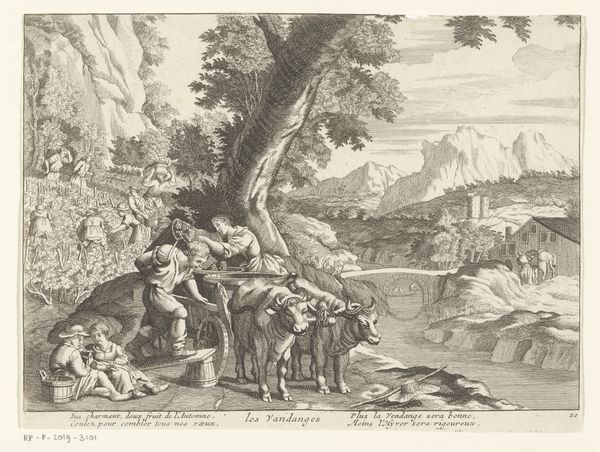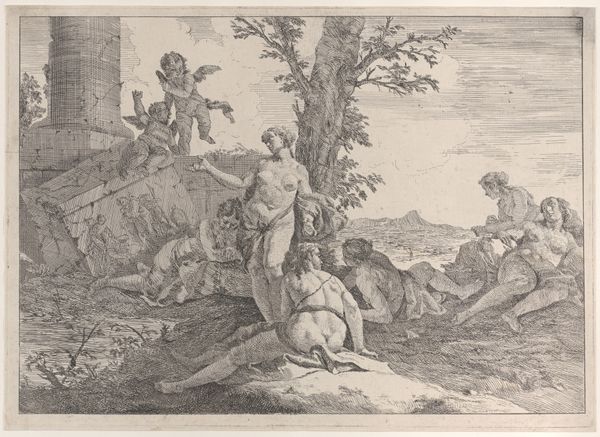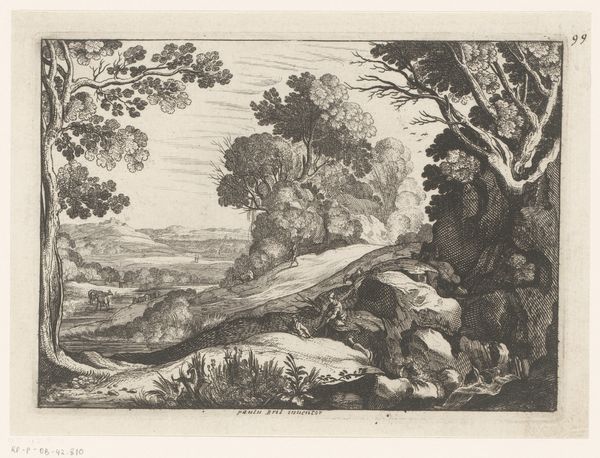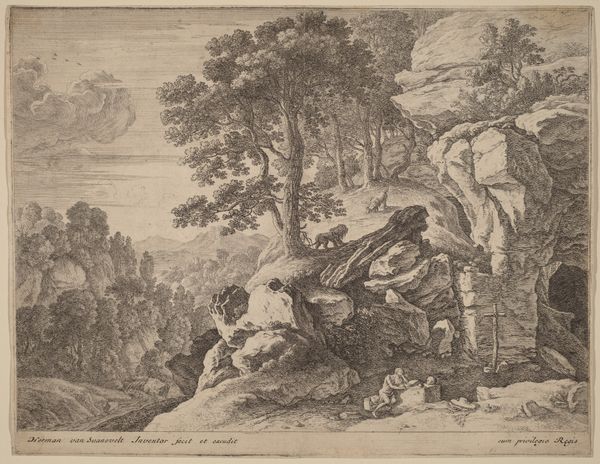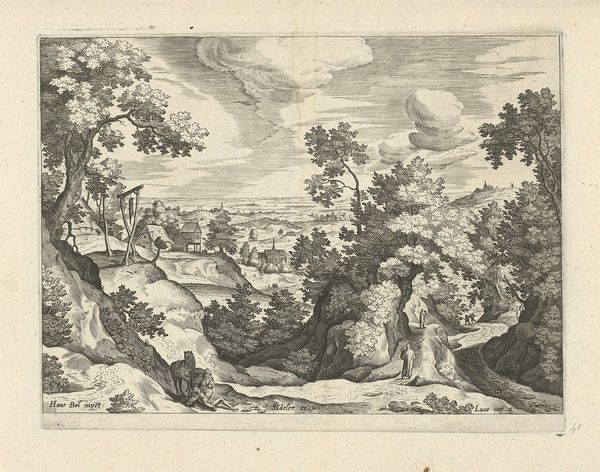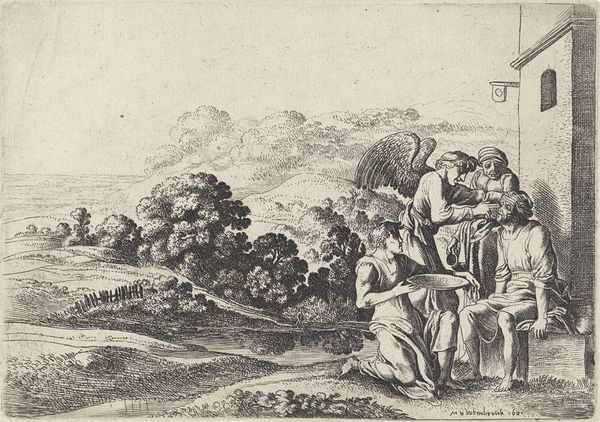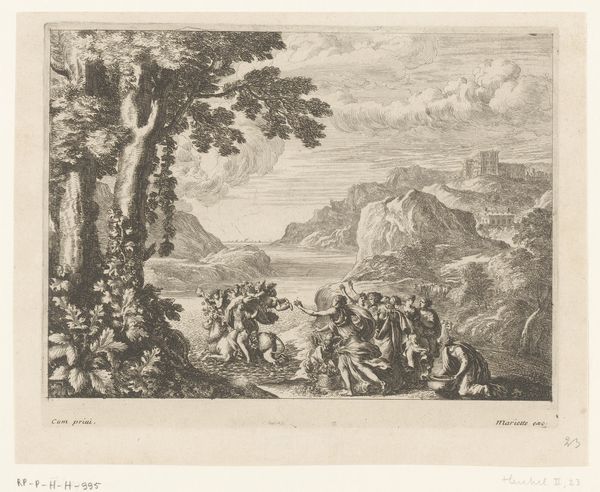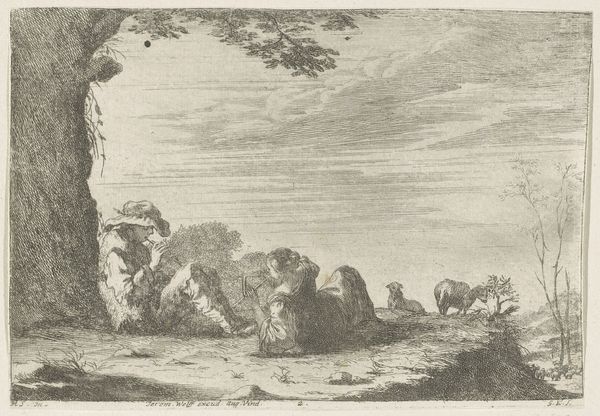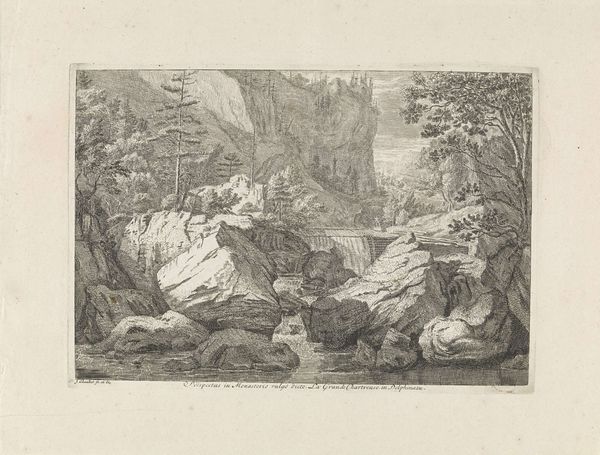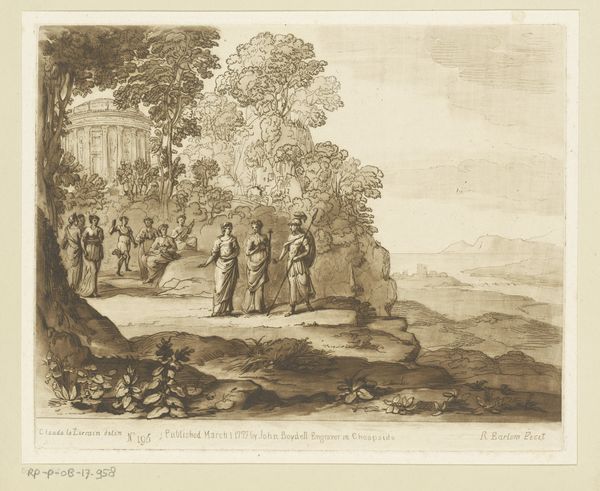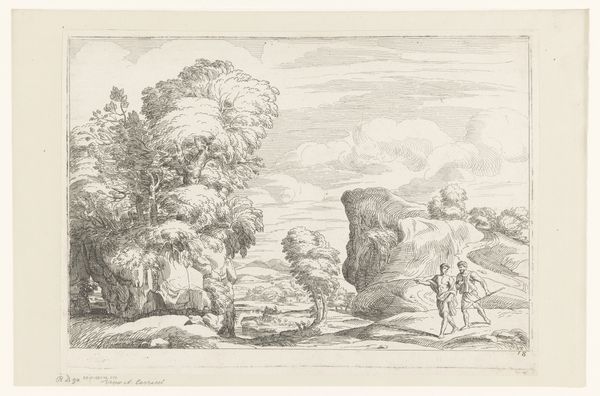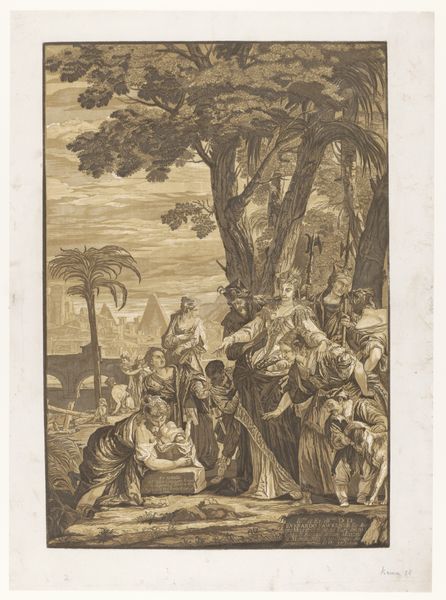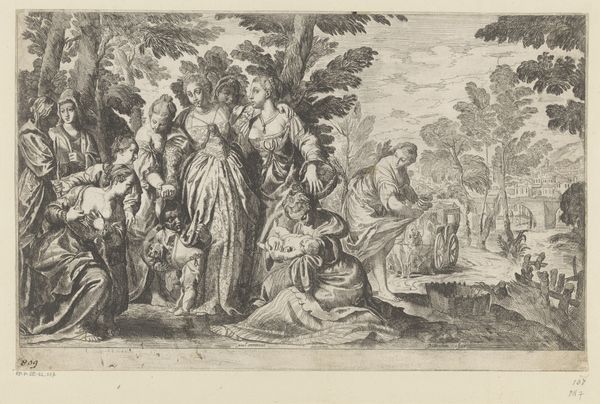
Johannes de Doper wijst twee apostelen op Christus in de verte 1659 - 1695
0:00
0:00
print, etching
#
baroque
# print
#
etching
#
landscape
#
etching
#
figuration
#
line
#
history-painting
Dimensions: height 288 mm, width 408 mm
Copyright: Rijks Museum: Open Domain
Editor: Here we have Jean-Baptiste Corneille's "Johannes de Doper wijst twee apostelen op Christus in de verte", an etching from between 1659 and 1695. I’m struck by the artist’s skillful rendering of the landscape. How do you read the material process of etching in this context? Curator: This print provides insight into the accessibility and circulation of religious narratives during this period. Etching, unlike painting, allowed for relatively easy reproduction and dissemination. Think about who had access to these images, who was consuming them, and how their understanding of faith may have been shaped by these mass-produced visuals. The materiality here is paramount – a copper plate, acid, paper, ink, a printing press - all part of the engine for wider distribution. Editor: So, you're emphasizing the production and its social ramifications over individual artistry. Does that downplay the skill involved in the etching process itself? Curator: Not necessarily downplay, but re-contextualize. Corneille’s skill serves the broader purpose of communicating religious doctrine to a wider audience. Consider the labor involved not just by the artist, but by the printers, distributors, even the paper manufacturers. The focus isn't just on high art, but also on the collective efforts that shaped the visual landscape of the time. It really opens our eyes when considering its creation and widespread dispersal to a growing number of people. Editor: I see. So the etching, as a multiple, becomes part of a network of production and consumption, changing how we understand both the artwork and its message. Curator: Precisely. And understanding the materials and methods helps us trace those networks and understand their impact on the culture of the time. Editor: That's a totally different perspective than what I usually think about! Thank you, I’ve learned so much by thinking about materiality!
Comments
No comments
Be the first to comment and join the conversation on the ultimate creative platform.
